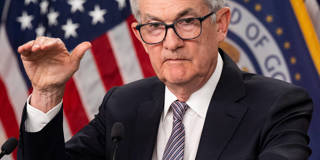The United States could achieve an inflation rate at or near the 2% target this year, with the real interest rate at a level that keeps supply and demand reasonably balanced. But, because structural shifts have diminished the supply side’s capacity to respond to demand-side pressures, the real rate can fall only so low.
SINGAPORE – What makes a journey? There is the destination, of course; but there is also the route one follows to get there, and the time it takes to complete it. This might be a useful framework for thinking about the future trajectory of inflation and interest rates – a journey with important implications for the cost of capital, valuations and multiples, debt sustainability, and more.
The first step is to understand how we got to where we are today. After pandemic-era restrictions were lifted, demand surged across the global economy, sustained partly by healthy household and corporate balance sheets, which reflected the generous fiscal support governments had delivered during the pandemic. But fiscal expansion also caused sovereign-debt levels to rise sharply – a development that will have consequences down the road.
When post-pandemic demand surged, the supply side could not keep up, so inflationary pressure intensified. Some of the supply-side disruptions – the so-called transitory blockages – were a legacy of pandemic-induced closures and imbalances, and quickly eased. But others proved to be deeper, secular, and structural, and excess demand remained stubbornly persistent. Eventually, major central banks intervened, rapidly hiking interest rates to constrain aggregate demand. And their efforts seem to have worked: inflation rates have started to come down.

SINGAPORE – What makes a journey? There is the destination, of course; but there is also the route one follows to get there, and the time it takes to complete it. This might be a useful framework for thinking about the future trajectory of inflation and interest rates – a journey with important implications for the cost of capital, valuations and multiples, debt sustainability, and more.
The first step is to understand how we got to where we are today. After pandemic-era restrictions were lifted, demand surged across the global economy, sustained partly by healthy household and corporate balance sheets, which reflected the generous fiscal support governments had delivered during the pandemic. But fiscal expansion also caused sovereign-debt levels to rise sharply – a development that will have consequences down the road.
When post-pandemic demand surged, the supply side could not keep up, so inflationary pressure intensified. Some of the supply-side disruptions – the so-called transitory blockages – were a legacy of pandemic-induced closures and imbalances, and quickly eased. But others proved to be deeper, secular, and structural, and excess demand remained stubbornly persistent. Eventually, major central banks intervened, rapidly hiking interest rates to constrain aggregate demand. And their efforts seem to have worked: inflation rates have started to come down.